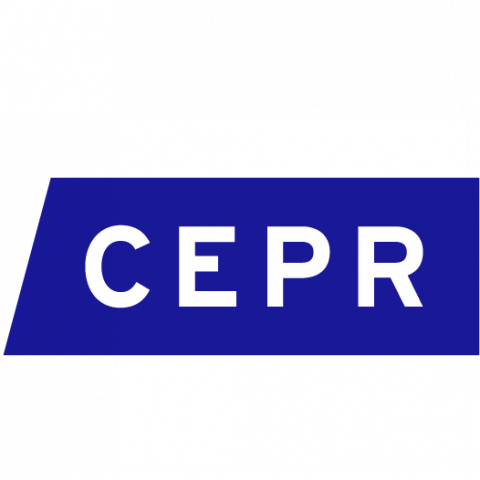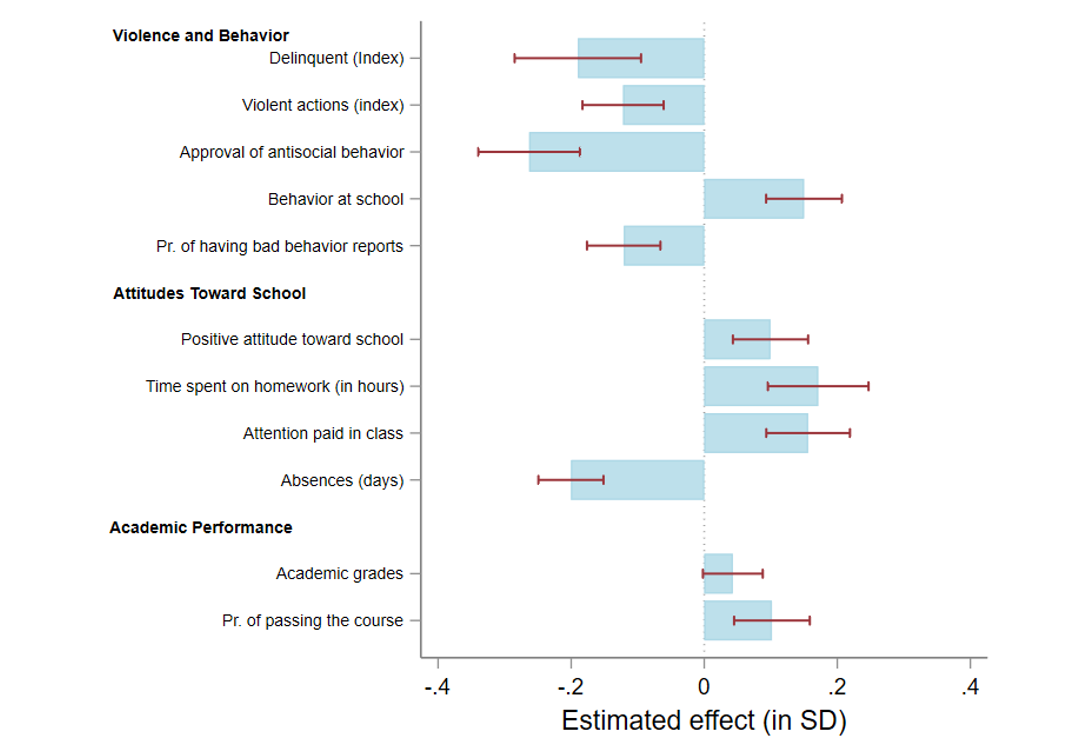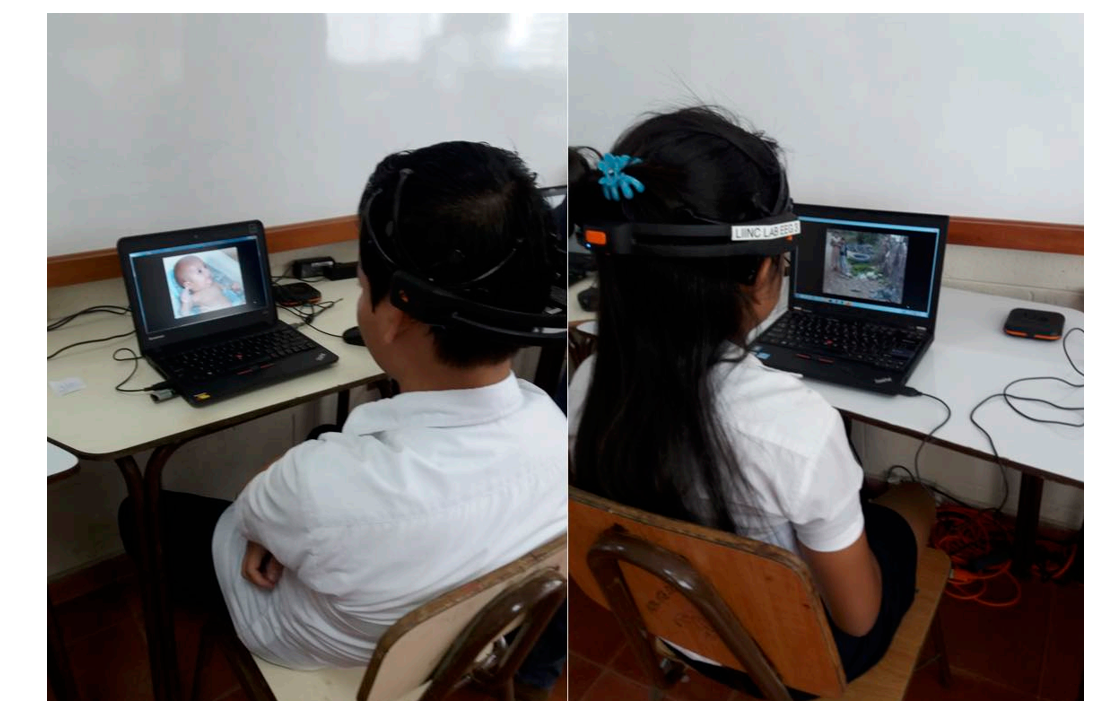
An innovative after-school programme provides vulnerable youth in El Salvador pathways to success and resilience
Central America is grappling with some of the world's highest levels of violence, significantly impacting various aspects of society, including education. This is particularly true for El Salvador, where violence has reached critical levels in recent decades, severely impacting its youth and educational system. Amidst these challenges, an innovative after-school programme (ASP) inspired by a psychology-based approach offers a glimmer of hope to school-aged children. Through this intervention, vulnerable Salvadoran youth are finding pathways to success and resilience.
Psychology-based interventions can reduce violent behaviours
Psychological interventions like Cognitive Behavioral Therapy (CBT), targeted at adolescents or young adults, have shown promise in reducing criminal outcomes in the short-term (Blattman et al. 2017, Heller et al. 2017). Empirical evidence suggests that CBT can lead to significant reductions in antisocial behaviours such as dealing drugs, stealing and robbing even one decade later (Blattman et al. 2023). Moreover, these interventions have been successful in enhancing adolescents’ and young adults’ socioemotional skills, physical and mental health, and academic outcomes (Cook et al. 2014, Barker et al. 2021, Heller et al. 2017).
A tailored intervention for El Salvador’s youth
Before 2021, the dire situation in El Salvador was starkly evident in the alarming homicide rates and the pervasive influence of organised criminal groups. This violence both directly threatened lives, and also undermined the educational opportunities for young Salvadorans. Dropout rates were soaring, and they were associated with violence in and around schools. Moreover, many vulnerable youth were at high risk of being recruited into gangs, perpetuating a cycle of violence and despair.
Recognising the potential of psychological interventions like CBT to address these complex issues, we evaluated the impact of an after-school programme (ASP) on 1,056 students aged 10 to 16 years, who were enrolled in five public schools located in high-risk communities in El Salvador (Dinarte-Diaz and Egana-delSol 2023). The programme was designed and implemented by Glasswing International and it consists of an ASP tailored to the needs of El Salvador’s youth.
The ASP sessions, conducted twice a week over 20 weeks in 2016, provided participants with a safe and supportive environment. Through experiential learning activities and club-specific curriculum (including leadership, art and culture, sports, and science), students were equipped with essential socioemotional skills while engaging in enjoyable and interactive experiences. ASP clubs provide a necessary complement to the four-and-a-half-hour public school day by giving students additional learning, enrichment, and recreational opportunities that minimise the risks that students would otherwise face on the streets after school.
These activities were led by volunteers collaborating with Glasswing International. They had no formal training in social work or psychology. Specialists from the NGO thoroughly trained the tutors before they started working with the students. Using well-trained, non-specialised staff is important for scaling up interventions, particularly in contexts like Central America where there is lack of specialists in psychology or social work, and the digital delivery of psychology-inspired interventions is still relatively new (Amaral et al. 2021).
The impact of the ASP was profound and multifaceted, as illustrated in Figure 1. First, it significantly reduced violent behaviours within schools and delinquent and violent outside of school. Moreover, the ASP reduced participants’ approval of antisocial behaviours. These improvements were measured using self-reports from students and school records on students’ disruptive behaviours reported by teachers.
Second, the ASP improved attitudes toward school and learning. Specifically, there is a measurable improvement in school attendance and on other reports from participants, such as spending more time on homework and improved attitudes toward school and attention paid in class, indicating a positive shift in their academic engagement.
Lastly, and consistent with evidence that behavioural skills promote and indirectly influence cognitive development (Cunha and Heckman 2008), we also found that the ASP successfully increased the participants’ academic performance.
Figure 1: Effects of the ASP on different outcomes.

Source: Dinarte-Diaz and Egana-delSol (2023), figure produced by the authors.
Delving deeper into the mechanisms behind these transformative outcomes, we conducted a novel, exploratory, rather speculative analysis on the role of emotion regulation in shaping the improvements in violent behaviours and academic performance. An inability to control their emotions can make those living in violent environments more susceptible to responding violently to certain situations they face. We argue that the ASP can improve the ability to consciously govern one’s emotional and physical responses to stimuli, which, in turn, can help to interrupt the negative automaticity (acting without thinking) that leads to violent behaviours.
Following the methodology of Egana-delSol (2016) and Egana-delSol et al. (2023), we identified neurophysiological biomarkers associated with emotion regulation. These biomarkers were discerned through electroencephalogram (EEG) recordings carried out in a lab-in-the-field setting, as depicted in Figure 2.
Figure 2: Lab-in-the-field setting.

Source: The photos were taken at Juan Ramon Jimenez School in La Libertad, El Salvador during two EEG recording sessions
This approach provided insights into the physiological alterations associated with participants’ emotional responses. This methodology for collecting data on emotions has many potential research and policy implications. First, it provides a way to incorporate neuroscience and emotion into the fields of education and violence economics. In addition, this study demonstrates a neurophysiological approach to proxy emotional dimensions in violent communities with a high level of objectiveness and at a relatively low cost.
The results using EEG recordings revealed a significant reduction in the participants' main emotion-related neurophysiological biomarker. This suggests that the ASP facilitated a calmer and more emotionally balanced mindset, enabling participants to make more deliberate and positive choices in their behaviour.
The ASP's success underscores the potential of evidence-based interventions to address complex social challenges. By combining rigorous research with practical implementation, the programme offers a blueprint for policymakers and practitioners seeking to make a tangible difference in their communities. This evidence is relevant to educational systems in developing countries, which sorely lack the resources necessary to provide quality education, and points to the fact that this and other ASP’s like it, can serve as a remedial programme to enhance academic attainment through the acquisition of socioemotional skills.
Beyond El Salvador, this research contributes to a broader understanding of the effectiveness of psychological programmes in reducing crime and violence and improving individual outcomes. By demonstrating the positive impact of an ASP in a highly violent context, the study highlights the importance of tailored approaches to address diverse challenges.
Ultimately, the ASP in El Salvador demonstrates that through continued collaboration and investment in evidence-based interventions, we can empower vulnerable youth.
References
Amaral, S, L Dinarte-Diaz, P Dominguez, and S M Perez-Vincent (2024), "Helping families help themselves: The (Un) intended impacts of a digital parenting program", Journal of Development Economics, 166: 103181.
Barker, N, G T Bryan, D Karlan, A Ofori-Atta, and C R Udry (2021), "Mental Health Therapy as a Core Strategy for Increasing Human Capital: Evidence from Ghana", NBER Working Paper No. 29407.
Blattman, C, J C Jamison, and M Sheridan (2017), "Reducing Crime and Violence: Experimental Evidence from Cognitive Behavioral Therapy in Liberia", American Economic Review, 107(4): 1165–1206.
Blattman, C, S Chaskel, J C Jamison, and M Sheridan (2023), "Cognitive Behavior Therapy Reduces Crime and Violence Over 10 Years: Experimental Evidence", American Economic Review: Insights, forthcoming.
Cook, P J, K Dodge, G Farkas, R G Fryer, J Guryan, J Ludwig, S Mayer, H Pollack, L Steinberg, et al. (2014), "The (Surprising) Efficacy of Academic and Behavioral Intervention with Disadvantaged Youth: Results from a Randomized Experiment in Chicago", NBER Working Paper No. 19862.
Cunha, F and J J Heckman (2008), "Formulating, Identifying and Estimating the Technology of Cognitive and Non-Cognitive Skill Formation", Journal of Human Resources, 43: 738–782.
Dinarte-Diaz, L and P Egana-delSol (2023), "Preventing Violence in the Most Violent Contexts: Behavioral and Neurophysiological Evidence from El Salvador", Journal of the European Economic Association, jvad068, https://doi.org/10.1093/jeea/jvad068
Egana-delSol, P (2016), "Affective Neuroscience Meets Labor Economics: Assessing Non-cognitive Skills on late stage investment on at-risk youth", In Skills For Sustainable Development: Essays On How Creativity, Entrepreneurship And Emotions Foster Human Development, chap. 2, Columbia University Academic Commons, New York, NY.
Egana-delSol, P, X Sun, and P Sajda (2023), "Neurophysiological Markers of Emotion Regulation Predict Efficacy of Entrepreneurship Education", Scientific Reports, 13: 1–15.
Heller, S B, A K Shah, J Guryan, J Ludwig, S Mullainathan, and H A Pollack (2017), "Thinking, Fast and Slow? Some Field Experiments to Reduce Crime and Dropout in Chicago", The Quarterly Journal of Economics, 132: 1–54.


